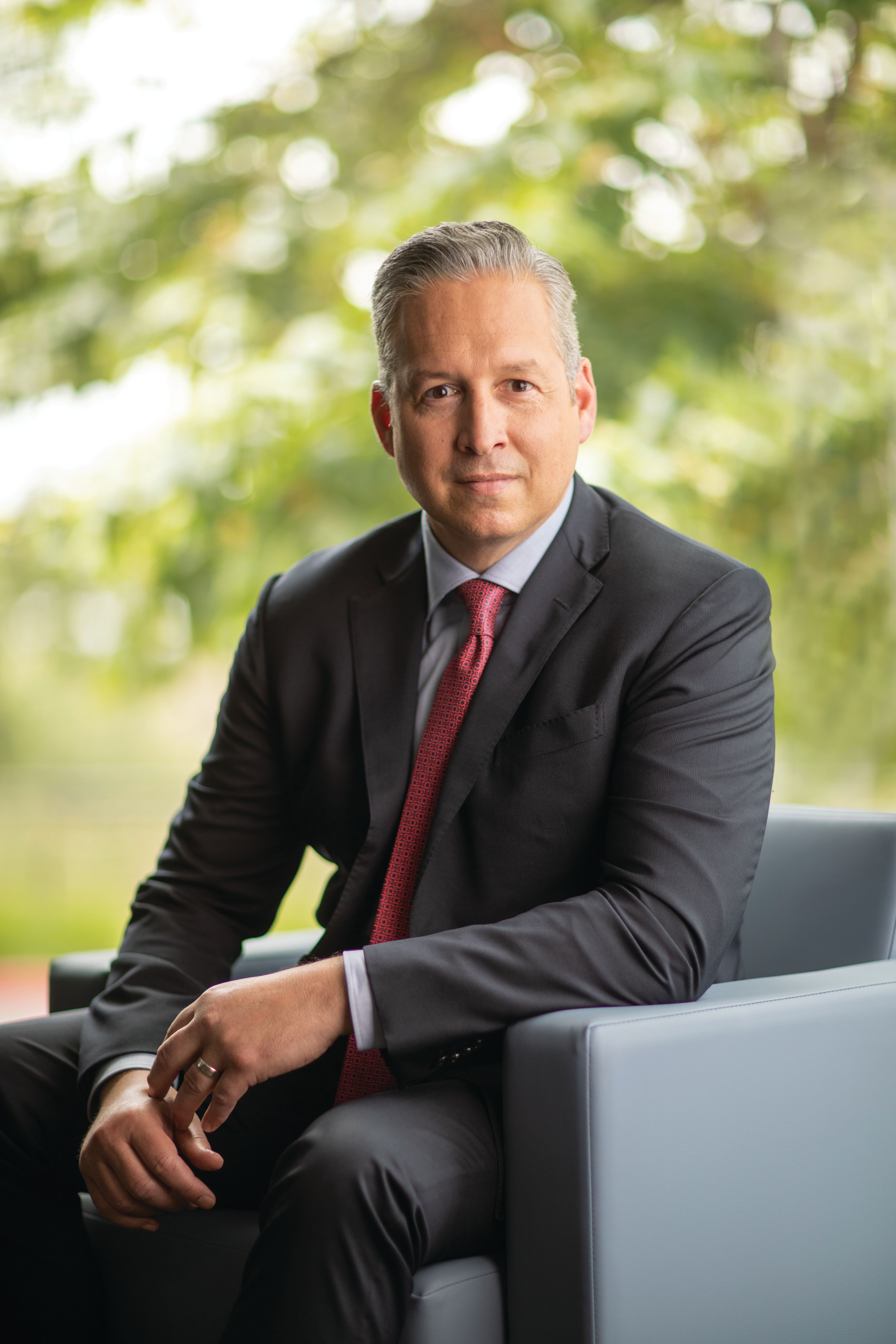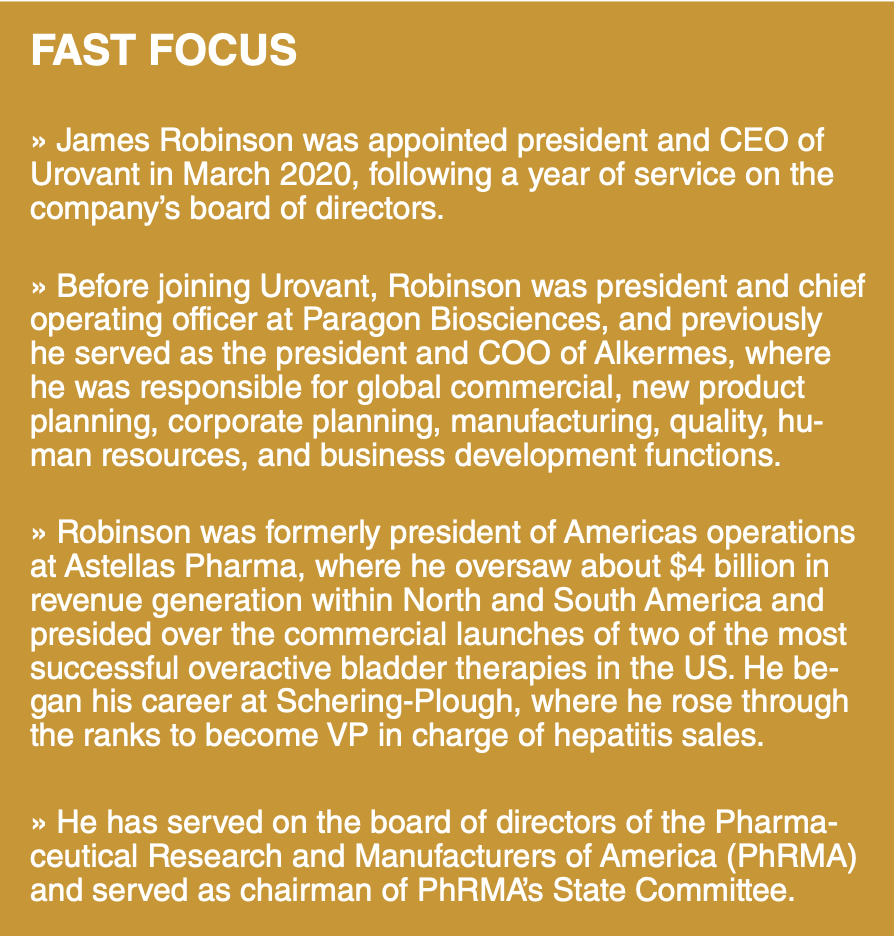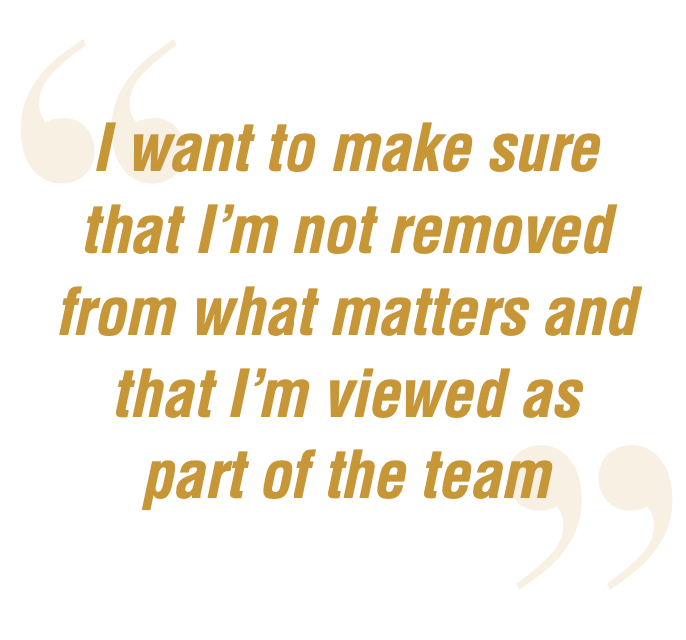Coach First, CEO Second
Influenced by lessons from the playing field, former rugby athlete James Robinson, today president and CEO of Urovant Sciences, discusses the keys to establishing a high-performing team culture in biopharma—and the end-game wins in treatment gain and patient need.

There is not enough sports talk in pharma. Most athletes know staying in the game means practice, focus, attention, and a willingness to be coached. Coaches can’t say enough about what it means to build a great team, taking individual strengths and complementing strategies to make the whole greater than the parts. After the strength of team and leadership, sometimes you get the rewards from competition…winning the game, the series, the championship. Sports lessons and metaphors can surely apply to leading a biopharmaceutical company today. And that’s definitely something to which Urovant Sciences President and CEO James Robinson can avow.
Robinson played baseball and football through his school years, and then rugby, which he played through college and into an adult league for the remainder of his 20s. “I really benefited from the collegiality and the camaraderie of being a part of a team,” he says. “And I was attuned to the concept of a team, what can be done with a team, and the level of enjoyment you have with a high-performing team.”
Don’t get Robinson wrong, the team won—a lot. And the winning was good. But it was second to being a part of a larger whole.
Many pharma professionals enter the industry as sales reps “carrying the bag” and Robinson is no exception. He started with Schering-Plough in 1992, out of college, as the company was expanding its primary care sales force for the launch of Claritin, then a prescription medication. He looks back to that time with gratitude. “I think what defines my career is the fact that I’m so grateful,” he says. “I feel so fortunate that I’ve been able to be in the industry for my entire career. I could not imagine myself in any other industry, doing anything else.” In fact, his aspirations at the time were to become a district sales manager. “If that would be the pinnacle of my career, I would retire a happy person,” he says.
Clearly, Robinson stayed the course in pharma, rising through the ranks at Schering-Plough (the company was acquired by Merck in 2009), then Astellas, leaving as president, Americas operations, to Alkermes, and then to Paragon Biosciences as president and chief operating officer, before taking his current role at Urovant. An early pivotal point was when he became a sales representative in Chicago and its suburbs and was communicating regularly with healthcare providers. “Having the conversations with a physician or a nurse on your product and the engagement with healthcare professionals on our products gave me a profound sense of helping and making a difference,” he says. This idea that he was part of the larger healthcare system, being part of a larger sum of the parts, reinforced his career decision.
Click to enlarge

Each successive role in pharma gave Robinson both mentors and opportunities to learn more broadly what makes a successful pharma company—moving medicines through the various stages of development and then getting them out in the market. He also was able to view what personal and professional possibilities were open to him, as well as learn what engaged teams look like. Here, another sports analogy comes into play.
“As a sales rep, succeeding feeds your competitive nature,” he says. “And then the coaching aspect comes in. You’re coaching the person next to you, because of the fact that the play is always dynamic, it’s never static. And so you’re constantly moving. That’s how you succeed on the rugby field. But it’s the same coaching people as managers. What is going well, what’s not going well? Then coach on how you get better.”
Culture of engagement
Coaching requires engagement, which Robinson says is achieved through time spent one-on-one with team members, to understand what is important to an individual in their professional and personal lives.

“In driving a culture of engagement, it starts with me,” says Robinson. “As CEO, I’m engaging with my leadership team on a regular basis. I want to make sure that I’m not removed from what matters and that I’m viewed as part of the team that works two levels up and two levels down every single day. I’m a huge believer in that, and I’ve seen it work in my life.”
At Astellas, where Robinson remembers it wasn’t the largest company in pharma, or even the largest in their therapeutic areas, his team would consistently achieve No. 1 or No. 2 in sales for its product’s therapeutic category. He attributes that to the commitments the team had to each other, as well as their larger goals.
Robinson believes a culture of engagement creates a multiplier effect. That is when one person is hired to do a job, if they are engaged to want to do more and contribute above and beyond, that multiplies across the organization. It produces a significant exponential effect, where 300 becomes 600.
That multiplier effect will come in handy as Urovant, at press time, was two and a half months into its launch of GEMTESA® (vibegron) 75 mg tablets, its beta-3 adrenergic receptor agonist, for the treatment of overactive bladder (OAB), with symptoms of urinary urge incontinence (UUI), urgency, and urinary frequency in adults. It may be no surprise that Robinson was appointed to lead Urovant in March 2020, shortly after the company submitted its new drug application.
He was on Urovant’s board of directors for the year previous, and oversaw the commercial launch of two OAB treatments, including Myrbetriq, at Astellas.
His first order of business was to continue to build an A-plus leadership team, culled from his extensive Rolodex. “A’s attract A’s, so that talent attracted other talent, and we have been able to build the company from a people perspective for the launch,” says Robinson.
He met with the leadership team to build a sense of collegiality and camaraderie, and then community, which then fostered the larger part of reputation and the concept that talent matters when building a company.
“The lesson here is the engagement piece is so important,” says Robinson. “I was fortunate to start with a nucleus of A talent, and that nucleus of A talent attracted more potential A’s.” In fact, there were almost 10,000 applicants for 150 sales rep positions, which is no small feat, considering COVID-19. Robinson notes that building engagement virtually requires stepping up. “You have to be very focused on communication, over communication, and consistency of communication,” he shares.
Robinson believes healthcare professionals who experience an engaged sales rep, with an engaged company, is one of the true paths to success. “If they see you’re committed to their therapeutic area, and if they see that you’re passionate about their patients’ needs, that helps a lot,” he says.
To that end, in the days, weeks, and months since GEMTESA received FDA approval on its PDUFA date, the team spent time on video calls engaging with the urology community.
“We want their feedback on challenges they face today in terms of treating their patients—with a product like GEMTESA now approved, do they see it having a benefit to their patients and would they use it in their practices?” says Robinson.

From approval to launch was 90 days, and in that time, the team went into deeper-dive conversations with the urology and long-term care community on the product label and clinical data. Robinson says his experience with the urology community, as well as his “A team” who come from the urology area, were more easily able to establish GEMTESA and Urovant credibility. “Relationships still matter when you’re a rep that can get access. It helps them know that you’re aligned with their goals and treating patients and you understand what their needs are,” says Robinson.
Along with the healthcare provider community, the payer community also gave positive response on the clinical differentiation of GEMTESA, which goes a long way toward patient access and affordability. In addition, GEMTESA has been named to the formulary of Express Scripts, one of the largest pharmacy benefit managers (PBMs), as well as the formularies of Blue Cross Blue Shield of Massachusetts and Humana.
A pipeline for patients
For Robinson, whose OAB commercial experience started in 2006, he understands the problems of quality of life and the clinical pathway progression for these patients. “I think about this: if you spend your life waking up every morning, figuring out your bathroom map, or not doing things because you’re afraid to do them, it must be a challenging existence,” he says.
Robinson explains that when patients are initially diagnosed with overactive bladder, the first step is behavioral and lifestyle modifications, such as reducing fluid, sodium, and alcohol intake. The second line is generally oral pharmacological therapy, which falls into two buckets—anticholinergics that have been around for over 40 years and the beta-3 agonists. The beta-3’s, of which GEMTESA is one, expands the capacity of the bladder, allowing the bladder to hold more urine, which provides patients the ability to hold longer and not have accidents. The third line of therapy is when the patient moves to a medical procedure or Botox injections.
OAB affects over 30 million Americans and it is considered a high unmet medical need in terms of options.
James Robinson, president and CEO of Urovant, with Cornelia Haag-Molkenteller, MD, PhD, the company’s executive vice president and chief medical officer.

Urovant is hoping URO-902, a novel gene therapy for OAB and UUI patients who have failed oral pharmacologic therapy, could one day offer another line option for patients. URO-902 is in Phase IIa clinical trials, enrolling its second dosing cohort. The Urovant gene therapy treatment would be a next-generation therapy and the first in OAB if it is approved. Along with GEMTESA for OAB, Urovant is studying vibegron in men with benign prostatic hyperplasia who have OAB.
The successful launch of GEMTESA is important for both Robinson and Urovant on many levels. Besides being the first new, oral branded OAB medication to reach the market in almost a decade, it is the first product Urovant is bringing to market.
“The successful launch of GEMTESA will be our calling card,” says Robinson. “The future really is now, and we have to define that future with the successful launch of GEMTESA.” That proven performance would enable Urovant to be the partner of choice for companies that are looking to out-license their product to a company that has the research to development to commercialization capabilities, as well as potentially enable Urovant to go beyond OAB.
Robinson, for now, is focusing on the immediate future of GEMTESA and its patients, and he’s optimistic. “Generally, doctors will bubble up if a patient responded well,” he says. “I spoke to one physician the other day whose patient said she’s not having any more accidents, and the patient cried.”
Robinson says that the feedback from patients and doctors is a huge benefit of this job. “It’s very rewarding that you actually help patients, and that to me, again, goes back to the gratitude piece,” he says. “It’s very fulfilling to know that your efforts are helping patients.”
Lisa Henderson is Pharm Exec’s Editor-in-Chief. She can be reached at lhenderson@mjhlifesciences.com.
